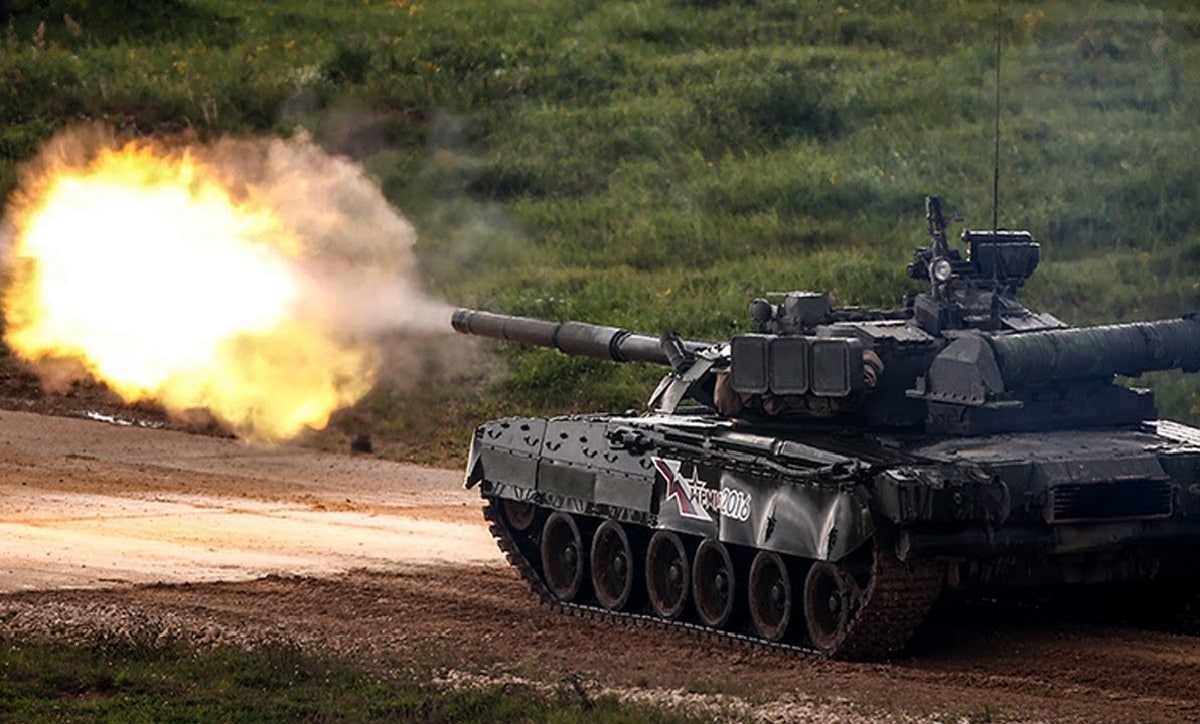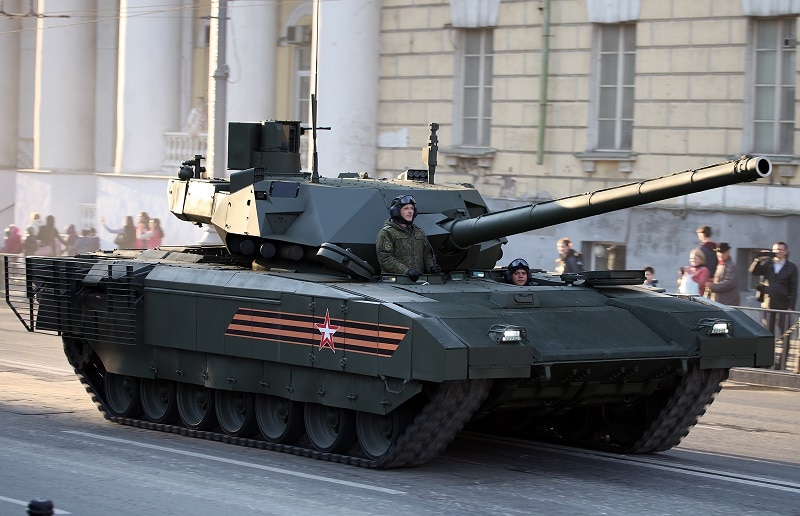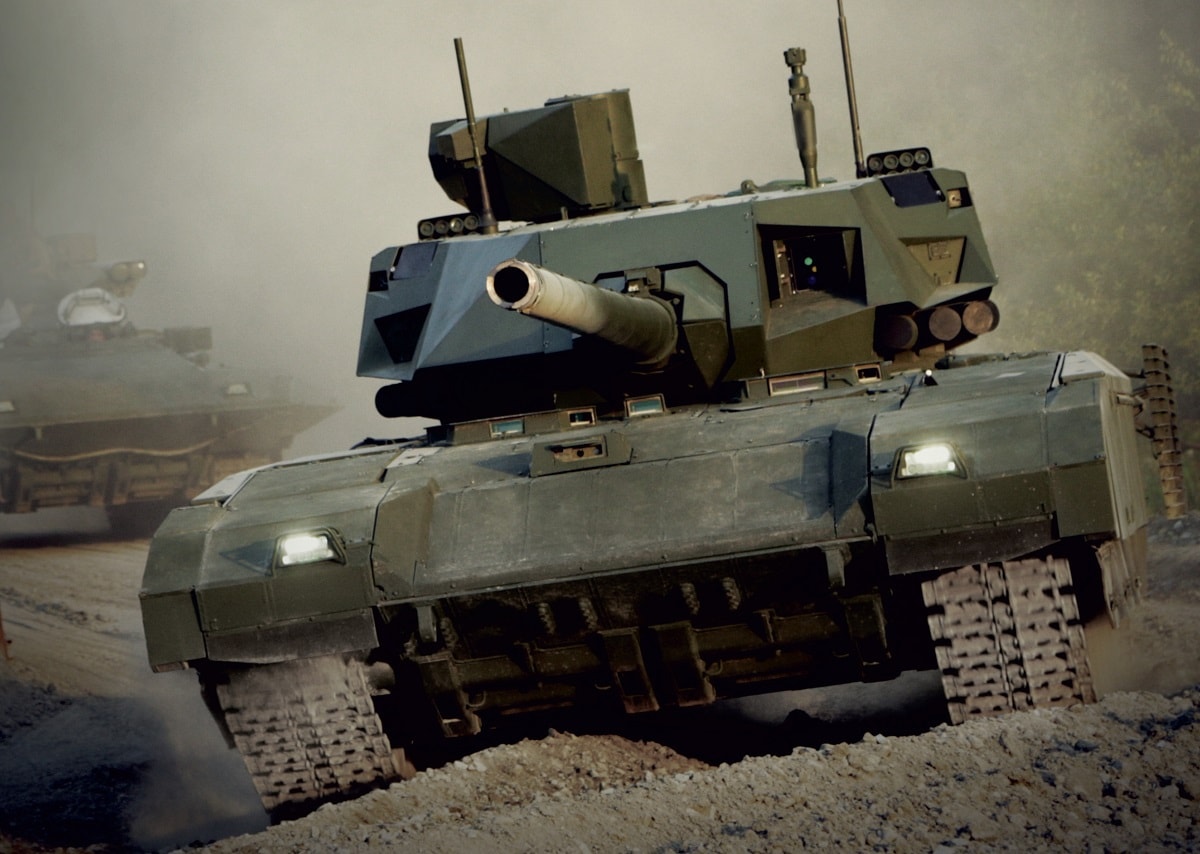Russia’s cutting-edge T-14 Armata tank was first displayed publicly on May 9, 2015, at the Moscow Victory Day Parade in Red Square, and during the rehearsals, one broke down. It wasn’t exactly an auspicious debut for the advanced tank, which had been in development for nearly half a decade. Yet, soon after it made its debut, the Russian Federation announced that it was expecting to order some 2,300 T-14s and have them in service by 2020.
An initial 20 were delivered for testing, but due to production and fiscal shortfalls, only a test batch of 100 tanks have so far been delivered and deployed to the 2nd Guards Tamanskaya Motor Rifle Division.
On Tuesday, Tass reported that the Russian Army will finally receive 20 more T-14 tanks by the end of the year – suggesting that the tanks are finally starting to roll out, albeit not in the numbers originally hyped.
“This year, 20 latest T-14 ‘Armata’ tanks will arrive for the troops,” Deputy Defense Minister Alexei Krivoruckho said during the single military output acceptance day.
More Than a New Tank
Russia’s T-14 is actually part of the Armata, a heavy-tracked standardized platform that serves as the basis for the main battle tank (MBT), as well as an infantry fighting vehicle, an armored personnel carrier, and other armored vehicles.
The MBT is an entirely new design for the Russian military and unlike previous models that had primarily followed an evolutionary path that was largely built upon preceding tank models, the T-14 began with a more simplistic design that could be traced back to the infamous T-34 that proved crucial to the war effort against Nazi Germany 80 years ago. The T-14 is much larger than past Russian tank designs but is also unique in that its three-man crew all sit in the hull as the turret is controlled remotely to increase survivability for those inside the steel beast. The T-14 has no gunner and instead uses an autoloader.
The tank is also fitted with the Afganit active protection system that is meant to detect incoming rockets and missiles, which can be shot down before hitting the tank. It is equipped with nuclear, biological and chemical (NBC) protection, (an) automatic fire suppression system and smoke grenade dischargers.
The Numbers Problem
Last month, Russian Industry and Trade Minister Denis Manturov had announced that the T-14 would enter serial production next year and that the tank would complete its state trials in 2022 as well.
However, as Janes reported last month, there remain conflicting reports about the state of the program. Defense Minister Sergei Shoigu had previously been quoted as saying that only “an experimental-industrial” batch of the T-14 tanks, T-15 infantry fighting vehicles, and T-16 armored recovery vehicles would be delivered next year. Not actually series production vehicles of those respective models.

Image of Armata T-14 Tank. Image: YouTube Screenshot.

Armata Tank. Image via Creative Commons/Vitaly V. Kuzmin
One issue is that the T-14 currently costs three times more than an upgraded T-72, and while prices of the T-14 Armata may come down during its third production run the tank possibly still remains too expensive for Moscow right now. For now, it may have to settle for smaller orders, such as the 20 that are expected to roll out soon.
Peter Suciu is a Michigan-based writer who has contributed to more than four dozen magazines, newspapers and websites. He regularly writes about military small arms, and is the author of several books on military headgear including A Gallery of Military Headdress, which is available on Amazon.com.

